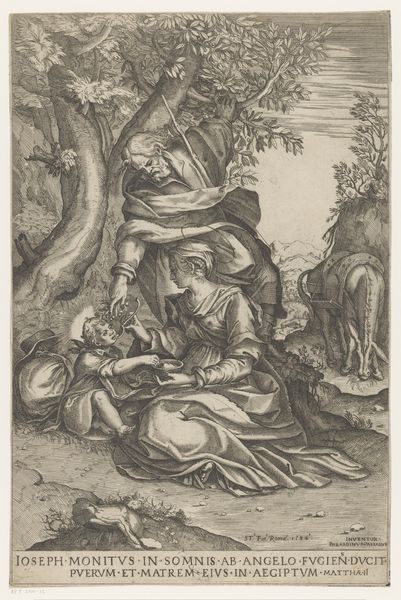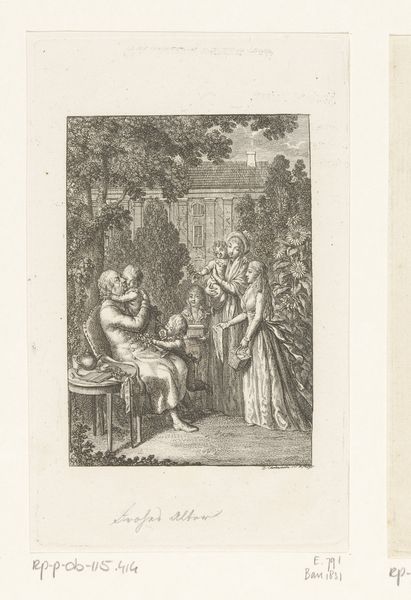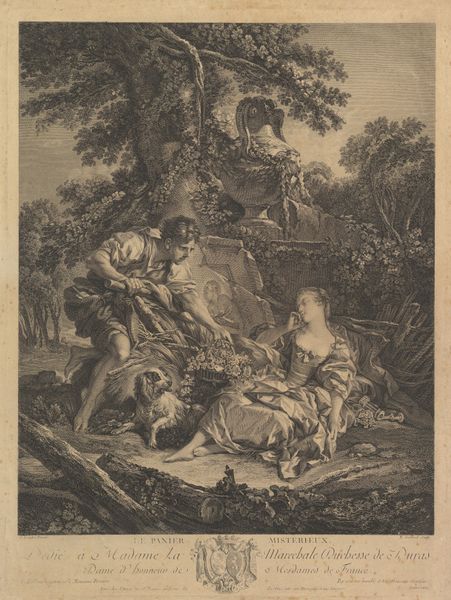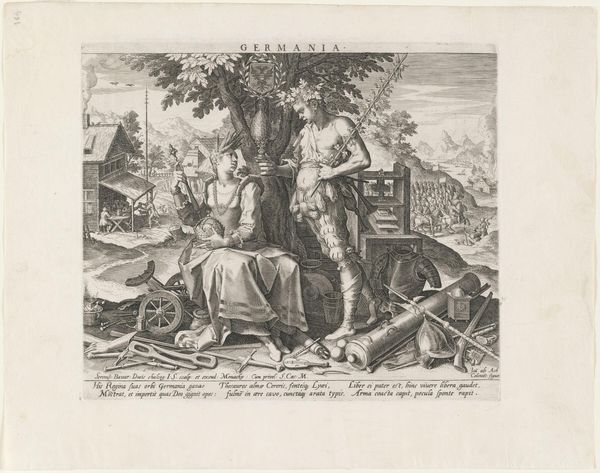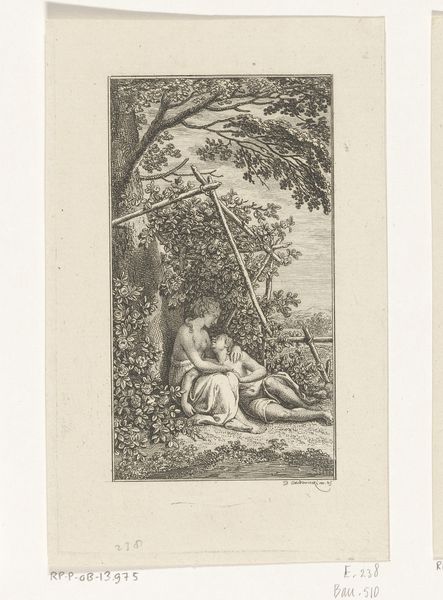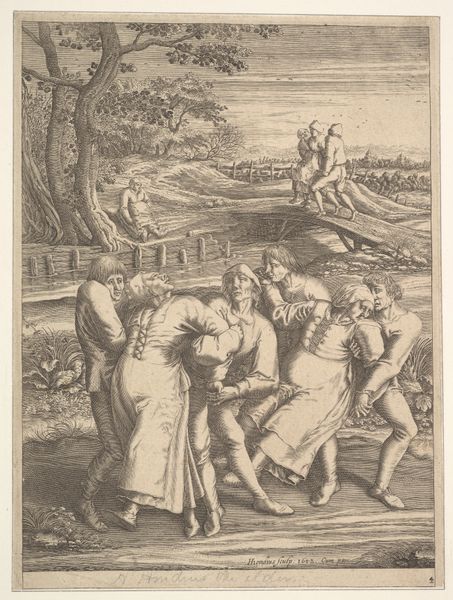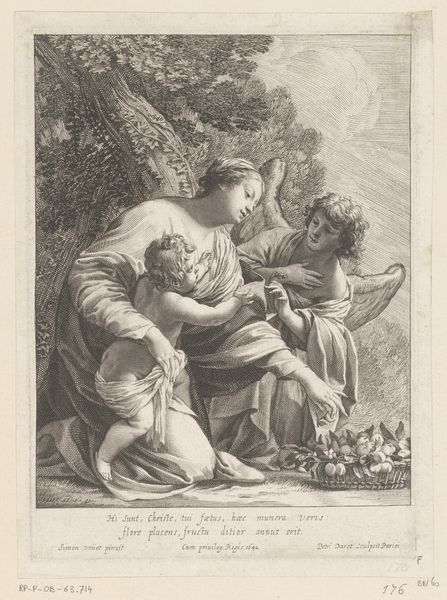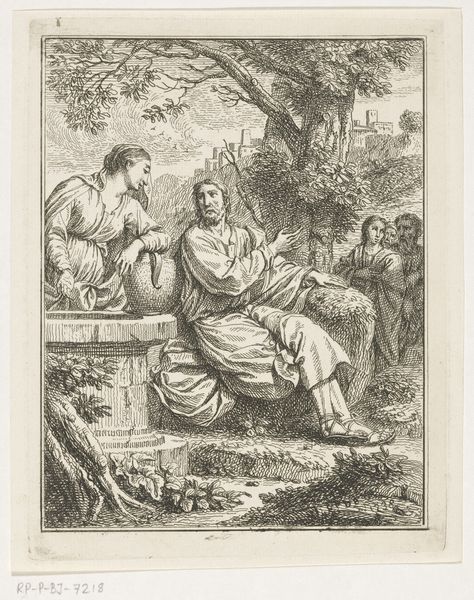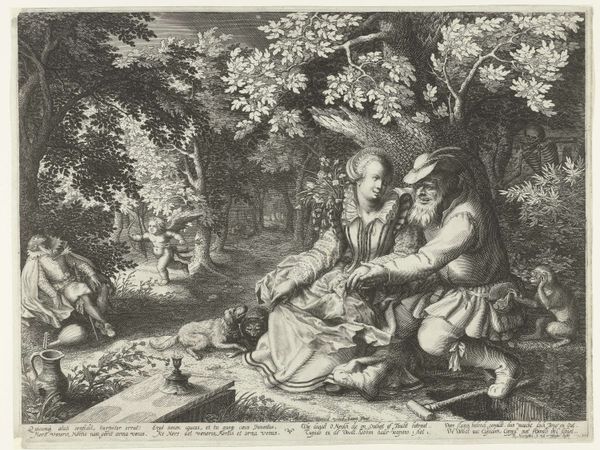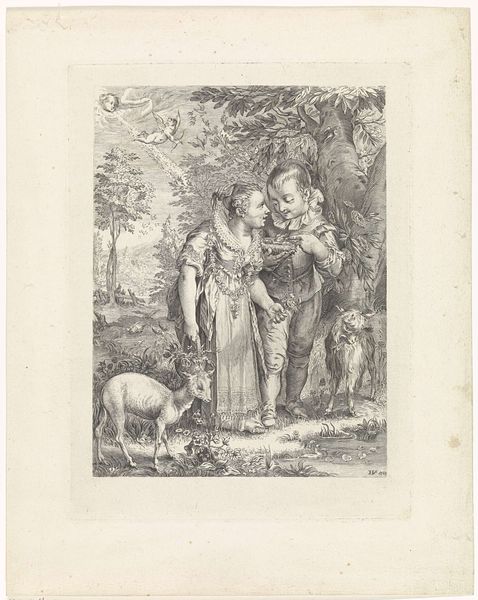
print, engraving
# print
#
landscape
#
figuration
#
genre-painting
#
northern-renaissance
#
engraving
Dimensions: height 239 mm, width 163 mm
Copyright: Rijks Museum: Open Domain
This is “Spring,” an engraving made around the 17th century by Magdalena van de Passe. Engraving is an intaglio process, meaning the image is incised into a plate, likely made of copper. Van de Passe would have used a tool called a burin to carve lines into the metal, a painstaking process demanding great skill. The depth and proximity of the lines determine the tones in the print, which are rendered in great detail here. Look at the textures of the figures’ clothing, or the soft fleece of the sheep at the lower left – all created by hand. Then consider the wider context: printmaking in the 17th century was a vital industry, employing many skilled artisans. Prints made images and ideas widely available, functioning almost like a form of social media. The value of this particular print lies not just in its artistry, but in its connection to broader networks of labor, skill, and circulation. It's a reminder that art never exists in isolation, but is always embedded in the world of materials and making.
Comments
rijksmuseum about 2 years ago
⋮
The boy’s upward gaze causes a curious element in this print to jump out, namely the cage with young birds hanging from the tree. The door is open, and the little birds can fly out. In 17th-century Dutch art this detail usually signifies the loss of virginity. But whether Magdalena van de Passe – Crispijn’s daughter – actually alludes to this here is open to discussion.
Join the conversation
Join millions of artists and users on Artera today and experience the ultimate creative platform.
